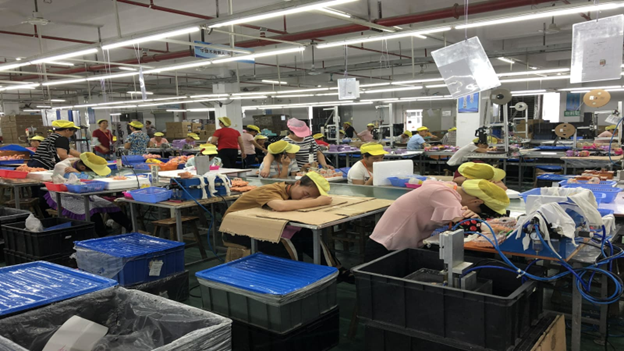Shifting Sands of Asian Manufacturing: The Evolution of the Global Factory Floor
The landscape of Asian manufacturing, historically known as the global factory floor, is undergoing a profound transformation. As the younger generation increasingly veers away from traditional factory work, Southeast Asian manufacturers are grappling with labor shortages and escalating costs. The implications of this generational shift, coupled with macroeconomic factors like China’s aging population and slowing GDP growth, are reverberating through the global supply chain, warranting a reexamination of long-standing manufacturing paradigms.
The Labor Challenge
In Vietnam, a garment factory aims to entice workers with an array of unconventional incentives, from floor-to-ceiling windows and a matcha tea-serving cafe to free yoga and dance classes. The struggle to attract and retain workers has set alarm bells ringing for Western companies reliant on Asia’s affordable labor force for producing consumer goods.
This phenomenon is emblematic of a broader trend in Asia, where the younger workforce, raised on social media and digital platforms, is increasingly shunning factory work for alternative career paths. The days of ultracheap Asian factory labor seem to be waning, posing a test to the global manufacturing model that has supplied consumers worldwide with budget-friendly products.
Quantifying the Shift
The labor dynamics in China underscore the gravity of the issue. Despite ample factory employment options, youth unemployment stood at 21% in June. In response, multinational companies are diversifying their production bases, moving operations to countries such as Malaysia, Indonesia, Vietnam, and India. However, even these nations are witnessing difficulties in recruiting young workers for factory roles.
Factory wages in Vietnam have more than doubled since 2011, reaching $320 a month, a stark contrast to the gradual increase in the U.S. over the same period. Similarly, China experienced a 122% rise in factory wages from 2012 to 2021, indicative of the mounting labor costs manufacturers are confronting.
Innovation Amidst Crisis
Manufacturers are deploying innovative strategies to adapt to this labor crisis:
- Educational Initiatives: To attract and retain young workers, factories are subsidizing kindergartens and offering technical training programs. This investment addresses the evolving needs of the workforce while bridging the skills gap.
- Geographical Relocation: Companies like Mattel, recognized for their Barbie dolls, consider “nearshoring” – relocating supply chains closer to the US – as a strategic move, demonstrated by their 2019 closure of two Asian factories and $50 million investment in expanding a Mexican plant. However, Mexico presents uncertainties, including an unreliable electrical grid and reliance on Asian suppliers due to a lack of locally produced materials.
- Facility Revamps: Factories are redesigning their facilities to create a more appealing work environment, mirroring the aesthetics and comfort of modern workplaces.
- Price Adjustments: Rising labor costs have led companies like Hasbro, Mattel, and Nike to raise prices for their products, signaling a potential shift in consumer spending habits.
Looking Forward
As Asia’s manufacturing landscape continues to evolve, the necessity to attract and retain a diverse workforce is driving innovation and prompting manufacturers to reassess their strategies. With an aging workforce, lack of competitive wages, and slowing economic growth, the global manufacturing sector faces the imperative to recalibrate its practices, prioritize employee well-being, and adjust pricing structures. While the challenge is formidable, it also presents an opportunity for the industry to reinvent itself and navigate the changing tide of labor dynamics successfully.


William Webb
August 10, 2023 at 4:37 amInteresting article Carson – especially for those like me who have had a long career in fashion – thank you. I hope you studies go well. Our 18 year old son Rob is about to start at The London School of Economics. You will have a great experience at McM D
Best wishes,
Bill Webb (London, UK)
McMillanDoolittle
August 10, 2023 at 12:18 pmThanks, Bill! I appreciate the kind words and best of luck to Rob!!